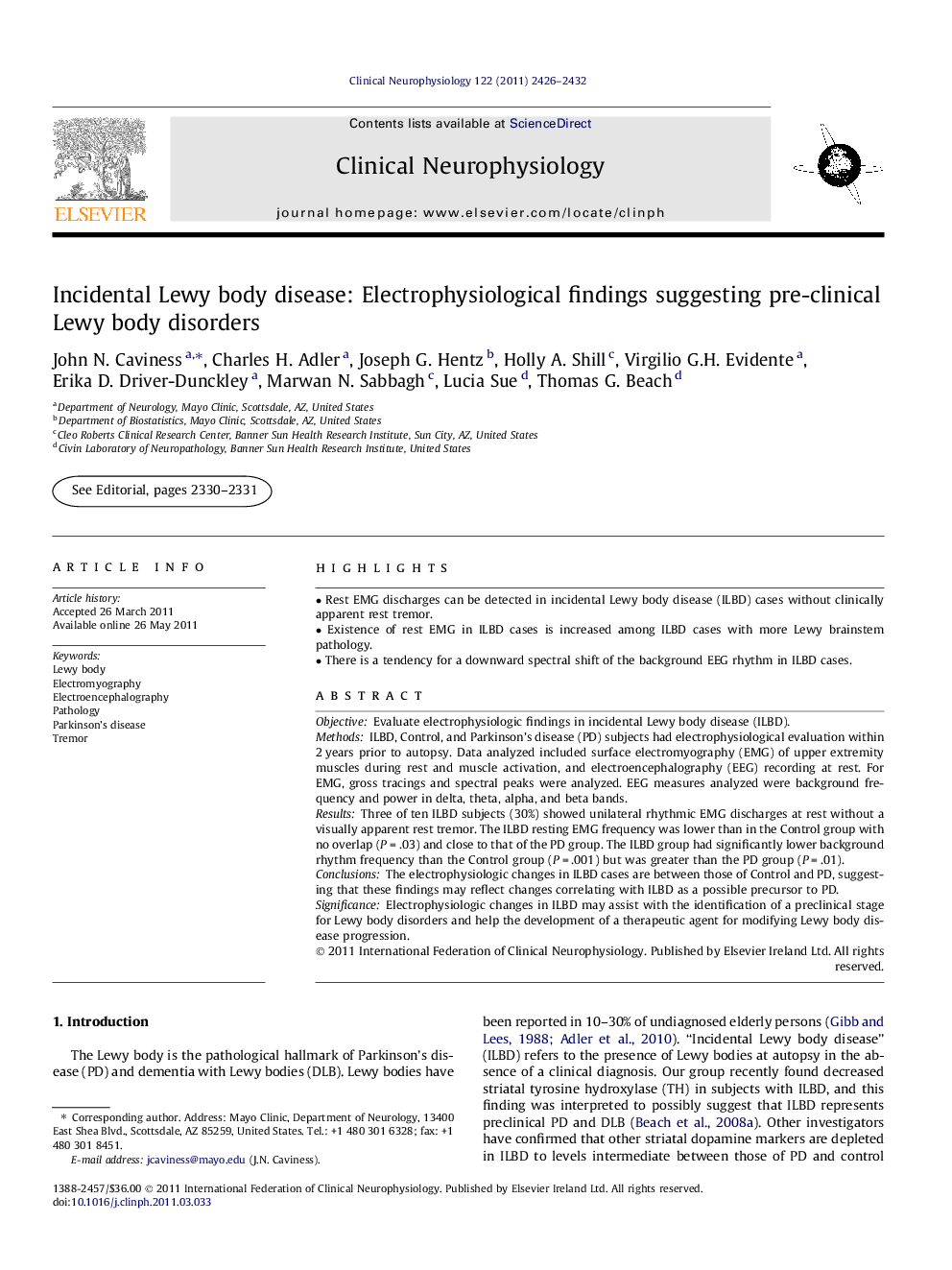| Article ID | Journal | Published Year | Pages | File Type |
|---|---|---|---|---|
| 3043979 | Clinical Neurophysiology | 2011 | 7 Pages |
ObjectiveEvaluate electrophysiologic findings in incidental Lewy body disease (ILBD).MethodsILBD, Control, and Parkinson’s disease (PD) subjects had electrophysiological evaluation within 2 years prior to autopsy. Data analyzed included surface electromyography (EMG) of upper extremity muscles during rest and muscle activation, and electroencephalography (EEG) recording at rest. For EMG, gross tracings and spectral peaks were analyzed. EEG measures analyzed were background frequency and power in delta, theta, alpha, and beta bands.ResultsThree of ten ILBD subjects (30%) showed unilateral rhythmic EMG discharges at rest without a visually apparent rest tremor. The ILBD resting EMG frequency was lower than in the Control group with no overlap (P = .03) and close to that of the PD group. The ILBD group had significantly lower background rhythm frequency than the Control group (P = .001) but was greater than the PD group (P = .01).ConclusionsThe electrophysiologic changes in ILBD cases are between those of Control and PD, suggesting that these findings may reflect changes correlating with ILBD as a possible precursor to PD.SignificanceElectrophysiologic changes in ILBD may assist with the identification of a preclinical stage for Lewy body disorders and help the development of a therapeutic agent for modifying Lewy body disease progression.
► Rest EMG discharges can be detected in incidental Lewy body disease (ILBD) cases without clinically apparent rest tremor. ► Existence of rest EMG in ILBD cases is increased among ILBD cases with more Lewy brainstem pathology. ► There is a tendency for a downward spectral shift of the background EEG rhythm in ILBD cases.
